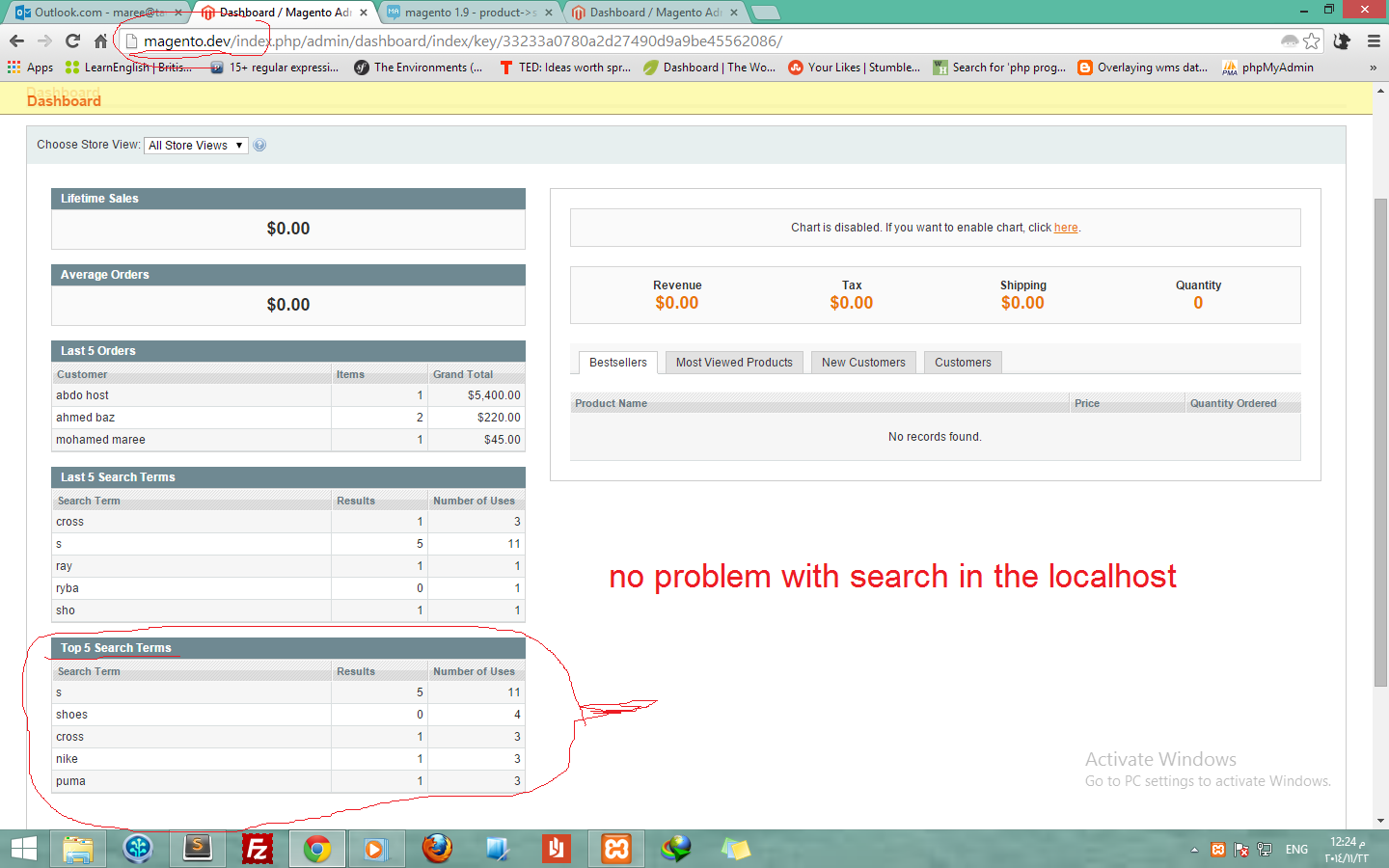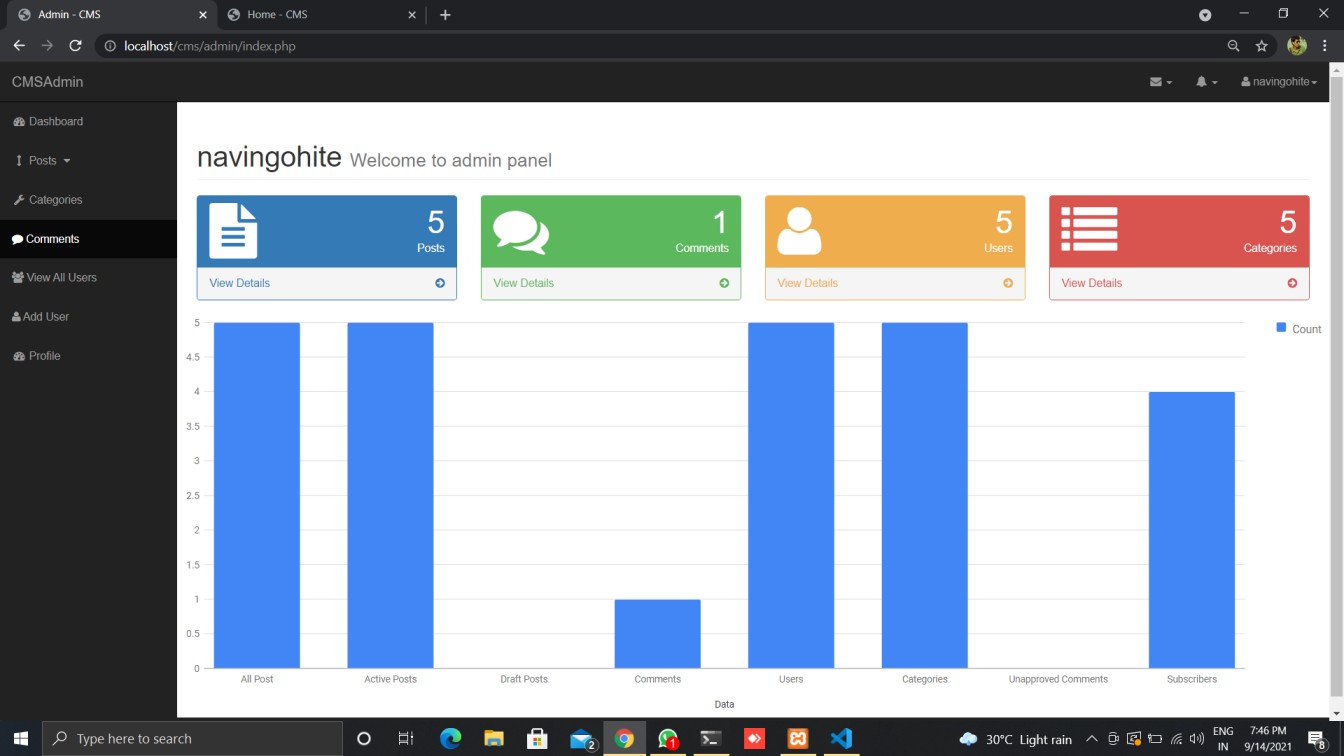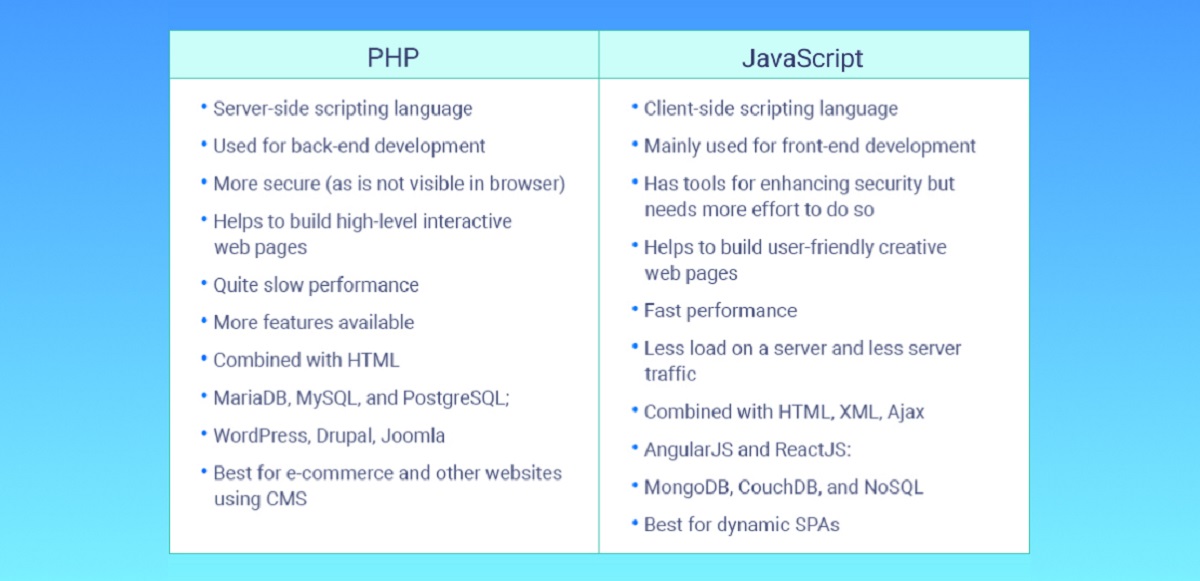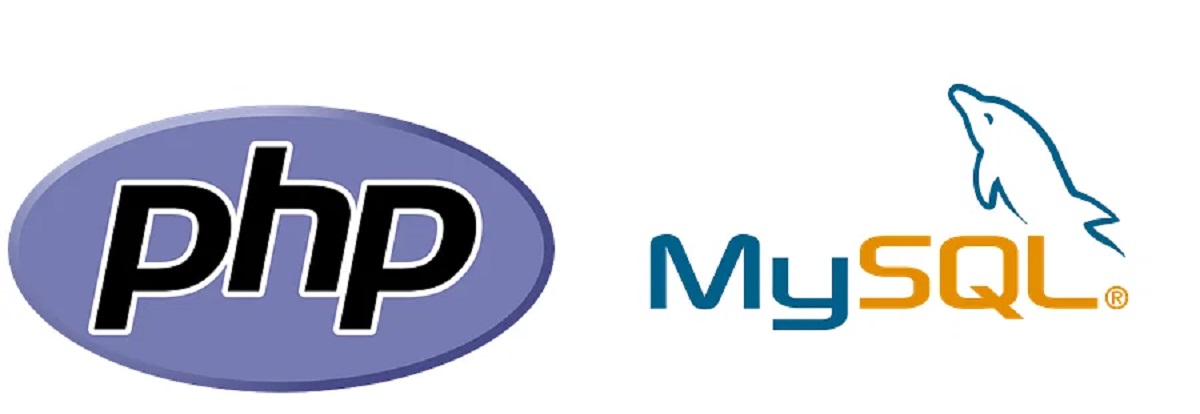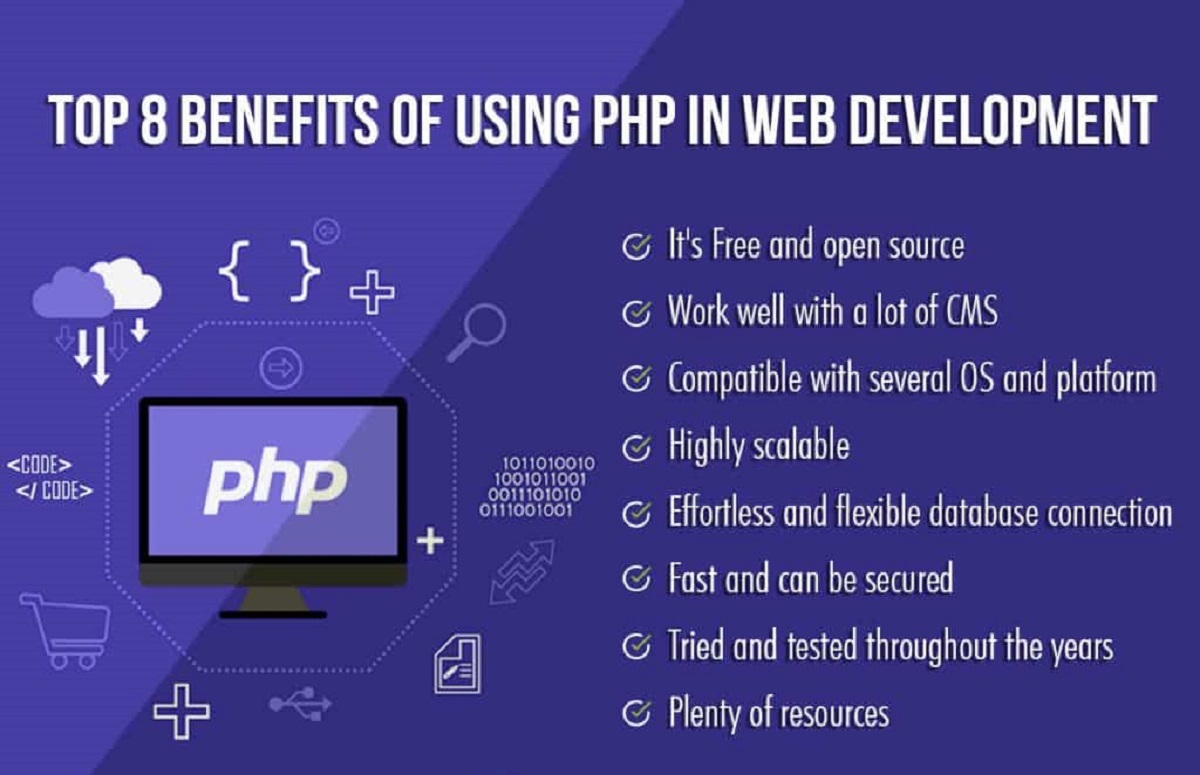Introduction
Welcome to the world of Magento! If you’re a developer or an e-commerce enthusiast, you’ve probably heard of this powerful PHP-based platform. Magento has become one of the most popular choices for building robust and scalable online stores.
Originally released in 2008, Magento has quickly gained momentum and established itself as a leading e-commerce platform, powering thousands of online businesses worldwide. Its flexible architecture, extensive feature set, and scalability make it a top choice for businesses of all sizes.
Magento provides developers and store owners with a comprehensive suite of tools and features to customize and manage their online stores efficiently. Whether you’re a small business owner looking to launch your first online store or a large enterprise seeking to expand your e-commerce presence, Magento offers the versatility and functionality to meet your needs.
In this article, we will explore what Magento is all about and why it has become so popular among developers and businesses alike. We’ll delve into the key features that make Magento stand out, as well as discuss the architecture that powers this robust platform.
We’ll also guide you through the process of installing Magento, creating your own custom themes, and developing extensions to extend the functionality of your online store. Lastly, we’ll touch upon some best practices for Magento development to ensure your projects are secure, scalable, and performant.
So, whether you’re new to Magento or already familiar with the platform, join us on this exciting journey as we explore the ins and outs of Magento and discover why it’s a top choice for e-commerce website development.
What is Magento?
Magento is a feature-rich open-source e-commerce platform written in PHP. It provides developers with a flexible and customizable framework to build online stores with exceptional functionality and user experience. With its extensive range of features and powerful backend system, Magento has become the go-to solution for businesses of all sizes.
At its core, Magento offers a robust set of tools to handle various aspects of e-commerce, including product management, inventory management, order processing, payment integration, and customer service. It allows you to create and manage multiple online stores from a single installation, making it ideal for businesses with diverse product offerings and target markets.
One of the key strengths of Magento is its scalability. Whether you’re starting with a small online store or anticipating rapid growth, Magento can handle it. It is designed to support a large number of products, high traffic volumes, and complex catalog structures. This scalability makes it a preferred choice for both small businesses and enterprise-level organizations.
Magento also provides a rich set of marketing and promotional tools to help drive traffic and boost sales. From upselling and cross-selling features to personalized product recommendations, Magento empowers you to create targeted campaigns and offer a personalized shopping experience to your customers.
Another advantage of using Magento is its vibrant community. With a vast community of developers and enthusiasts, Magento offers a wealth of resources, extensions, and themes to enhance your store’s functionality and appearance. Developers can leverage this community by seeking help, sharing knowledge, and contributing to the growth and improvement of the platform.
In recent years, Magento has further expanded its capabilities with the release of Magento 2. This version introduced significant performance improvements, streamlined checkout process, enhanced security features, and a more intuitive admin panel. It also offers better integration with third-party systems and improved mobile responsiveness to cater to the growing mobile commerce trend.
In summary, Magento is a robust e-commerce platform that provides developers with the tools and flexibility to create stunning online stores. Its scalability, extensive feature set, and active community make it a preferred choice for businesses looking to establish a strong online presence. Whether you’re a small business owner or a large enterprise, Magento offers the capabilities needed to succeed in the ever-evolving world of e-commerce.
Why Use Magento?
When it comes to choosing an e-commerce platform, there are several options available. However, there are compelling reasons why Magento stands out as a popular choice for businesses of all sizes. Let’s explore some of the key reasons why you should consider using Magento for your online store:
1. Flexibility and Customization: Magento offers unparalleled flexibility and customization options. The platform provides a modular architecture, allowing you to customize and extend its functionality to meet your specific business requirements. With its extensive range of APIs and integration capabilities, you can seamlessly connect Magento with other systems, such as ERP, CRM, and payment gateways.
2. Scalability: Whether you’re a startup or an enterprise-level business, Magento can scale with your growth. It can handle large product catalogs, high traffic volumes, and complex inventory management. Magento’s ability to support multiple stores from a single installation makes it perfect for businesses with diverse product offerings or targeting different markets.
3. Rich Feature Set: Magento offers a comprehensive set of features to manage all aspects of your e-commerce store. From product management, inventory tracking, and order fulfillment to advanced marketing tools and customer segmentation, Magento provides everything you need to run a successful online business.
4. SEO-Friendly: Magento comes with built-in SEO features, making it easy to optimize your store for search engine visibility. It includes features like SEO-friendly URLs, meta tags, site maps, and customizable URL structures. This helps improve your store’s organic search rankings and drives more targeted traffic to your site.
5. Mobile Responsiveness: In today’s mobile-first world, having a responsive website is crucial. Magento understands this and ensures that your online store looks and performs flawlessly across different devices and screen sizes. By providing a seamless shopping experience for mobile users, Magento enables you to tap into the growing mobile commerce market.
6. Active Community Support: Magento has a thriving community of developers, partners, and enthusiasts who actively contribute to the platform’s growth. This means that you can benefit from a wealth of resources, extensions, and themes created by the community. You can seek help, exchange knowledge, and stay updated with the latest industry trends through the Magento community.
7. Security and Reliability: Magento takes website security seriously. The platform incorporates robust security features to protect your store and customer data from potential threats. Regular updates and patches ensure that your online store remains secure and reliable.
These are just some of the reasons why Magento is a preferred choice for businesses seeking a powerful and customizable e-commerce platform. By harnessing the capabilities of Magento, you can create an exceptional online shopping experience and drive your e-commerce business to new heights.
Features of Magento
Magento is renowned for its extensive feature set, which empowers businesses to create and manage robust online stores. Let’s explore some of the key features that make Magento stand out:
1. Product Management: Magento offers a comprehensive product management system that allows you to easily manage your product catalog. You can create and update product listings, set pricing, manage inventory, and organize products into categories and attributes.
2. Order Processing: With Magento, order processing becomes streamlined and efficient. You can view and manage orders, generate packing slips, track shipments, and handle refunds or cancellations. The platform also supports multiple payment options, enabling a seamless checkout experience for your customers.
3. Catalog Management: Magento provides robust catalog management capabilities, allowing you to create and manage product catalogs across multiple stores, languages, and currencies. You can create custom product attribute sets, manage pricing rules, and implement advanced catalogs with configurable products and variations.
4. Marketing and Promotions: Magento offers a wide range of marketing and promotional tools to drive traffic and boost sales. You can create personalized shopping experiences, upsell and cross-sell products, implement customer segmentation, set up loyalty programs, and promote your store through various channels.
5. SEO Optimization: Magento is designed with SEO in mind, offering features such as search engine-friendly URLs, meta tags, sitemaps, and URL rewrites. These features help improve your store’s visibility in search engine results, driving more organic traffic to your site.
6. Mobile Responsiveness: With the increasing prevalence of mobile commerce, having a responsive website is crucial. Magento provides responsive design capabilities, ensuring that your online store looks and performs flawlessly across various devices and screen sizes.
7. Multi-store Management: Magento allows you to create and manage multiple stores from a single installation. This feature is particularly useful for businesses operating in different regions or targeting different markets. You can customize each store’s design, products, pricing, and promotions to cater to specific target audiences.
8. Scalability and Performance: Magento is built to handle high volumes of traffic and large product catalogs. It offers excellent scalability and performance, ensuring that your online store remains fast and responsive even during peak times.
9. Third-party Integrations: Magento has a wide range of third-party integrations available, allowing you to connect your store with popular payment gateways, shipping providers, ERP systems, CRM software, and more. These integrations help streamline your business operations and provide a seamless customer experience.
10. Security and Updates: Magento prioritizes security and regularly releases updates and patches to address any vulnerabilities. This commitment to security ensures that your store and customer data remain protected.
These are just a few of the many features that make Magento a powerful and versatile e-commerce platform. Whether you’re a small business owner or a large enterprise, Magento provides the functionality and flexibility to create a successful and engaging online store.
Architecture of Magento
The architecture of Magento is one of the key factors that contribute to its flexibility, scalability, and robustness as an e-commerce platform. Understanding its architecture is essential for developers and system administrators working with Magento. Let’s take a closer look at the architecture of Magento:
1. Model-View-Controller (MVC) Pattern: Magento follows the MVC architectural pattern, which provides a clear separation between the presentation layer (View), the business logic (Model), and the data persistence (Controller). This separation allows for easier maintenance, extensibility, and customization of the platform.
2. Entity-Attribute-Value (EAV) Database Structure: Magento utilizes an EAV database structure to handle its highly flexible and customizable data model. This structure allows for the creation of dynamic attributes and the efficient storage of diverse types of data. It provides the flexibility to add custom attributes to various entities such as products, categories, and customers, without altering the database schema.
3. Modules: Magento’s architecture is module-based, meaning that its functionality is organized into discrete modules that can be turned on or off as needed. Each module is responsible for a specific set of features, such as catalog management, order processing, and customer management. This modular approach makes Magento highly customizable and enables developers to extend or modify the platform’s functionality easily.
4. Blocks, Layouts, and Templates: Magento uses a system of blocks, layouts, and templates to handle the presentation layer. Blocks are the modular components responsible for rendering specific pieces of content, while layouts define the structure and positioning of these blocks. Templates provide the HTML markup for the blocks. This flexible system allows for easy customization and theming of the frontend.
5. Web API: Magento provides a robust and extensive set of web APIs that allow for seamless integration with third-party systems and services. The web APIs enable developers to access and manipulate various Magento resources, such as products, orders, and customer data, using standard HTTP methods and formats like REST and SOAP.
6. Caching: Caching plays a crucial role in optimizing the performance of Magento. The platform offers various caching mechanisms, including full-page caching, block-level caching, and database query caching. These caching mechanisms help reduce the load on the server and improve the response time of the online store, resulting in a better user experience.
7. Cron Jobs: Magento utilizes cron jobs for various scheduled tasks, such as generating sitemaps, indexing products, and sending email notifications. Cron jobs automate these repetitive tasks and ensure that they are executed at specific intervals. This enhances the efficiency and performance of the online store.
8. Database and Indexing: Magento employs an optimized database structure and indexing mechanism to improve the performance of data retrieval and search operations. The indexing process organizes and optimizes the data, allowing for quicker search queries and efficient data updates.
By understanding the architecture of Magento, developers and system administrators can leverage the platform’s modular and flexible nature to build and maintain highly customized and scalable online stores. This architecture allows for easy extension, customization, and integration, enabling businesses to create unique and tailored e-commerce experiences for their customers.
How to Install Magento
Installing Magento is a straightforward process that requires a server environment capable of running PHP and a compatible database. Let’s walk through the steps to install Magento:
1. System Requirements: Ensure that your server meets the minimum system requirements for running Magento. This includes having a supported version of PHP, a compatible database (such as MySQL or MariaDB), and necessary PHP extensions. It’s also recommended to have a web server like Apache or Nginx installed.
2. Download Magento: Visit the official Magento website and download the latest version of Magento. You can choose between the Open Source (formerly Community Edition) or the Commerce (formerly Enterprise Edition) version, depending on your specific requirements.
3. Prepare the Server: Create a new database for your Magento installation and ensure that you have the necessary privileges to access and modify the database. Also, make sure the server environment meets Magento’s file system permissions requirements.
4. Upload Magento Files: Upload the Magento files to your server using an FTP client or by using the command line. Ensure that you upload the files to the root folder of your domain or the desired subfolder where you want to install Magento.
5. Run the Installation Wizard: Access your domain or the subfolder where Magento has been uploaded using a web browser. You will be redirected to the Magento installation wizard. Follow the on-screen instructions to configure your store’s settings, including the database connection details, administrator account, and the store’s locale and currency settings.
6. Complete the Installation: Once you have entered all the necessary information, click on the “Install Now” button. Magento will then proceed with the installation process, configuring the database, and setting up the necessary tables and directories.
7. Configure Store Settings: After the installation is complete, you can access the Magento admin panel by appending “/admin” to your domain or subfolder URL. Log in using the administrator account credentials you provided during the installation. In the admin panel, you can further configure your store settings, install extensions, manage products, and set up payment and shipping methods.
8. Install and Configure Extensions: To enhance the functionality of your Magento store, you can install extensions. These extensions provide additional features and capabilities. You can find a variety of free and paid extensions in the Magento Marketplace or from third-party providers. Install and configure the desired extensions to tailor your store to meet your specific needs.
9. Customization and Design: Customize the appearance and layout of your Magento store by installing a theme or creating a custom theme. Themes allow you to change the visual aspects of your store without modifying the core code. You can find a variety of free and premium themes available in the Magento Marketplace or from third-party theme providers.
That’s it! You have successfully installed Magento on your server and configured your online store. From here, you can start adding products, managing orders, and growing your e-commerce business using the powerful features and tools provided by Magento.
How to Create a Magento Theme
Creating a custom Magento theme allows you to personalize the appearance and design of your online store, making it unique and aligned with your brand identity. Let’s explore the steps involved in creating a Magento theme:
1. Choose a Starting Point: Magento provides a default theme as a starting point for creating custom themes. Choose whether you want to start from the Luma (default) theme or the Blank theme. The Blank theme offers a more minimalistic foundation, while the Luma theme provides a pre-designed look and feel.
2. Create Theme Files and Structure: Create a new folder for your custom theme in the “app/design/frontend” directory of your Magento installation. Inside the custom theme folder, create the necessary directories/files, including “etc”, “web”, “css”, “js”, and “Magento_Theme” folders. These folders will contain the necessary files for the theme.
3. Configure Theme Files: Open the “theme.xml” file located in the “etc” folder of your custom theme and define the parent theme (Blank or Luma) by specifying the theme name. You can also set the preview image and other theme-specific configurations in this file.
4. Customize Styles and Layouts: Customizing the visual appearance of your theme involves modifying the stylesheets, JavaScript files, and layout XML files. You can edit the “styles.css” file located in the “web/css” folder to change the styling, colors, fonts, and overall appearance of your theme. Additionally, modify the layout XML files in the “Magento_Theme” folder to control the structure and placement of page elements.
5. Add Custom Templates: To modify specific sections of your store or create custom layout elements, you can create new template files. These template files reside within the “templates” folder, located in the appropriate subfolder of your custom theme. You can use PHP and HTML to create dynamic and customized templates for different store pages.
6. Override Core Files (if needed): If you need to modify specific functionality provided by Magento’s core modules or extensions, you can override the relevant files in your custom theme. This practice ensures that your modifications are kept separate from the core files, making it easier to maintain and upgrade your theme in the future.
7. Deploy the Theme: After making all the necessary customizations, you need to deploy the theme’s static assets. Use the command line interface to run the “bin/magento setup:static-content:deploy” command, specifying your custom theme. This will generate the static files required for your theme and place them in the appropriate directories.
8. Apply and Test the Theme: Once the static assets are deployed, you can apply your custom theme to your Magento store by navigating to the admin panel and selecting your theme from the “Stores” > “Configuration” > “Design” settings. Apply the theme to the appropriate store or store view and clear the cache. Test your theme across different devices and browsers to ensure it renders correctly and is responsive.
That’s it! You have successfully created a custom Magento theme. By following these steps, you can tailor the visual appearance of your store, reflecting your brand identity and creating a unique and engaging shopping experience for your customers.
How to Create a Magento Extension
Creating a Magento extension allows you to extend the functionality of your online store, adding new features and capabilities to meet your specific requirements. Let’s go through the steps involved in creating a Magento extension:
1. Plan and Define: Determine the purpose and functionality of your extension. Identify the problem you want to solve or the feature you want to add to your Magento store. Plan the scope of your extension and define the specific requirements and goals.
2. Set Up the Development Environment: Create a local development environment for your extension development. Install a local server with a compatible version of PHP and a database system like MySQL or MariaDB. Set up Composer, Git, and a text editor or IDE for coding.
3. Create Extension Structure: Create a new directory for your extension in the “app/code” directory of your Magento installation. Ensure that the directory structure follows Magento’s naming conventions, including Vendor and Module names. For example, “app/code/Vendor/Module”.
4. Create Module Configuration: Inside the extension directory, create a “etc” folder and create a configuration file named “module.xml” within it. This file defines the module name, version, and other details. Also, create a “registration.php” file outside the “etc” folder to register your module.
5. Define Module Components: Create the necessary folders within your extension directory, including “Controller”, “Model”, “Block”, and “view” folders. These folders will house the PHP files and templates required for the functionality of your extension.
6. Code the Extension: Write the PHP classes and functions required for your extension’s functionality. Utilize Magento’s coding standards and follow best practices for writing clean, well-commented, and reusable code. Implement the desired features, hooks, observers, or plugins depending on the functionality you want to add.
7. Implement Backend and Frontend Functionality: Depending on the nature of your extension, you may need to implement functionality in both the Magento Admin Panel (backend) and the storefront (frontend). Develop the necessary backend features using Magento’s UI components and layout XML files. For the frontend, create and modify templates, JavaScript files, and CSS stylesheets as needed.
8. Test and Debug: Thoroughly test your extension to ensure its functionality, compatibility, and performance. Use Magento’s testing tools, conduct manual testing, and simulate various scenarios to ensure your extension works as expected. Debug any issues that arise during testing and resolve them to ensure a smooth user experience.
9. Package and Distribute: Create a composer.json file in your extension’s root directory to define the package dependencies and provide information about the extension. Package the extension as a ZIP file or upload it to a repository for distribution. Consider sharing your extension on the Magento Marketplace or other reputable extension marketplaces.
10. Document and Support: Prepare clear and comprehensive documentation for your extension, including installation instructions, configuration options, and usage guidelines. Provide support channels such as a dedicated support email or forum to address users’ questions and issues related to your extension.
By following these steps, you can create a high-quality Magento extension tailored to your store’s specific needs. Remember to continually update and maintain your extension as new versions of Magento are released to ensure compatibility and take advantage of new features and improvements in the platform.
Best Practices for Magento Development
Developing a Magento store requires adhering to certain best practices to ensure the stability, performance, and maintainability of your online store. Let’s explore some essential best practices for Magento development:
1. Follow Magento Coding Standards: Adhere to Magento’s coding standards and guidelines to ensure consistency and readability in your codebase. This includes naming conventions, code organization, proper commenting, and usage of Magento APIs and libraries.
2. Use Version Control: Utilize a version control system like Git to track changes to your codebase. This allows for easy collaboration, code rollback, and better overall management of your Magento project.
3. Leverage Custom Modules and Extensions: Whenever possible, extend Magento’s functionality using custom modules and extensions instead of modifying the core code. This allows you to easily update Magento without overriding or losing your customizations.
4. Optimize Database Performance: Implement proper indexing, avoid unnecessary database queries, and utilize Magento’s caching systems to optimize database performance. Regularly monitor and analyze the performance of your database to identify and fix any bottlenecks.
5. Optimize Frontend Performance: Minify and bundle JavaScript and CSS files, leverage caching mechanisms, and optimize image sizes to improve frontend performance. Utilize Magento’s built-in Full Page Cache and Varnish caching for faster page load times.
6. Implement Security Measures: Ensure that your Magento store is secure by following Magento’s security best practices. Keep your Magento installation up to date, use strong passwords, employ SSL certificates, and regularly scan for vulnerabilities.
7. Implement Responsive Design: Create Magento themes that are responsive and mobile-friendly. Ensure your store looks and functions seamlessly across different devices and screen sizes. Test your store on various devices and use tools like Google’s Mobile-Friendly Test to ensure optimal mobile experience.
8. Optimize SEO: Implement proper META tags, optimize URL structures, generate sitemaps, and utilize Magento’s SEO-friendly features to improve your website’s search engine visibility. Conduct keyword research and apply proper on-page optimization techniques to boost your store’s organic rankings.
9. Regularly Update and Test: Stay up to date with the latest Magento releases and security patches. Regularly update your Magento installation and test thoroughly to ensure compatibility and identify any bugs or issues.
10. Monitor and Analyze: Continuously monitor your Magento store’s performance, user behavior, and sales metrics. Utilize tools like Google Analytics and Magento’s built-in reports to gain insights and make informed decisions to optimize your store’s performance and conversions.
By following these best practices, you can ensure that your Magento store is well-optimized, secure, and performs at its best. Implementing these practices from the early stages of development and maintaining them throughout the lifecycle of your Magento project will contribute to the long-term success and scalability of your online store.
Conclusion
Magento is a powerful and versatile e-commerce platform that provides developers and businesses with the tools and flexibility to build and manage successful online stores. With its extensive feature set, scalable architecture, and vibrant community, Magento stands out as a popular choice for e-commerce website development.
In this article, we explored what Magento is and why it is widely used in the industry. We discussed the key features that make Magento a robust e-commerce platform, including its flexibility, scalability, and rich set of marketing and promotional tools. We also delved into the architecture of Magento, highlighting its modular structure, MVC pattern, and EAV database structure.
Additionally, we provided step-by-step guides on how to install Magento, create custom themes, develop extensions, and follow best practices in Magento development. These practical tips and insights serve as valuable resources for developers and system administrators looking to leverage the full potential of Magento and create exceptional online stores.
By following best practices in Magento development, such as adhering to coding standards, utilizing version control, optimizing performance, implementing security measures, and staying up to date with updates and patches, you can ensure the stability, scalability, and security of your Magento store.
In conclusion, Magento offers a comprehensive and customizable solution for businesses of all sizes, enabling them to create stunning and feature-rich online stores. Whether you’re a small business owner looking to establish an online presence or an enterprise-level organization seeking to expand your e-commerce operations, Magento provides the tools and flexibility to meet your specific needs and drive your business forward in the competitive e-commerce landscape.







